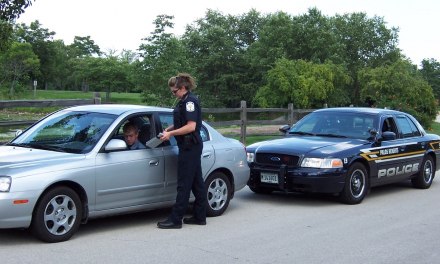Ohio football player, prescribed 260 doses of painkillers in 2 months, dies; Family Sues Walgreens
So begins the story of a teenager, this one an All-State high school football star, who suffered a rotator cuff injury. His family physician prescribed 50 hydrocodone – you may know it as Vicodin – for pain. Nothing unusual in that. But that’s not where it ended.
After a month of treatment, surgery was recommended. The day of the procedure, the young man was given another prescription, for more hydrocodone. That was dispensed by a local Walgreens pharmacy.
For some reason (and I’m not clear what it was), a second prescription was filled the following day — this time written by a second physician, for oxycodone (better known as Oxycontin). Five days after that, 50 more oxycodone were prescribed by the first physician.
And five days later, still another script appeared, for 50 additional hydrocodone.
That was in 2009. Eight years later, in 2017, the patient died of an overdose — oxy, but fentanyl, too.
Now, the family wants Walgreens to take responsibility.
They argue that it was this initial exposure to opioids, for the original injury, that resulted in the patient’s rapid descent into active addiction. A severe case, too. The young man went through five rehabs before he finally succumbed to the fatal OD.
Skip forward to 2021: Walgreens objects in court that tragic as it was, the young man’s death could not have been their responsibility. They noted that pharmacists in Ohio are not required by law to warn patients about a drug’s potential side effects, adverse reactions, or other dangers, when they fill a prescription for a patient.
The trial court agreed.
Nevertheless, the family appealed, and surprisingly, they prevailed. By arguing that Walgreens should have known that addiction was a likely result of this kind of opioid overprescribing to a young person. And therefore should have warned the athlete and his parents of the risks. Or better still, refused to fill the excessive prescriptions.
An addictionologist was called in to testify in support of the plaintiffs. His view: “If a surgeon left scissors in the belly of a patient undergoing surgery, and the scissors punctured the patient eight years later and caused the patient to die, the surgeon would be liable for the death…”
It was enough to have the case sent back to the trial court. There’s more to come, I feel certain. Stay tuned.
A couple observations of my own.
First, it appears that chain pharmacists did in fact become concerned about the size or the source of some of the opioid prescriptions written during this period. They reported it to their bosses at Corporate and were instructed to simply go ahead and fill the scripts anyway. And not to question orders from doctors, because that wasn’t the pharmacist’s role.
If they did object, it was presumably at the risk of their employment.
To me, that’s just dumb. What’s the point of requiring a licensed pharmacist to fill a prescription if they’re not allowed to express a legitimate concern about the drugs they’re passing to the patient? Why bother going through all that education and training?
Perhaps the folks at Corporate feared loss of business if they allowed employees to question prescribers. Or maybe they saw it as opening a can of worms, legally speaking.
Well, the can’s open now, people.
As for pharmacists: I’ve seen some who I thought knew way more about the drugs they worked with than the average physician. It’s a specialty, after all.
Whatever the company’s reasoning, it needs to change. Possibly at the State or Federal level. A licensed pharmacist with the power to object should act as an important check and balance on improper prescribing.
Another observation: We all know opioid addiction often becomes obvious only months or longer following initial exposure to the drugs. Most of us assume that the passage of so much time makes legal action against the source a virtual impossibility.
Now I wonder. Maybe cases like this one will lead families of victims to re-think their position.












